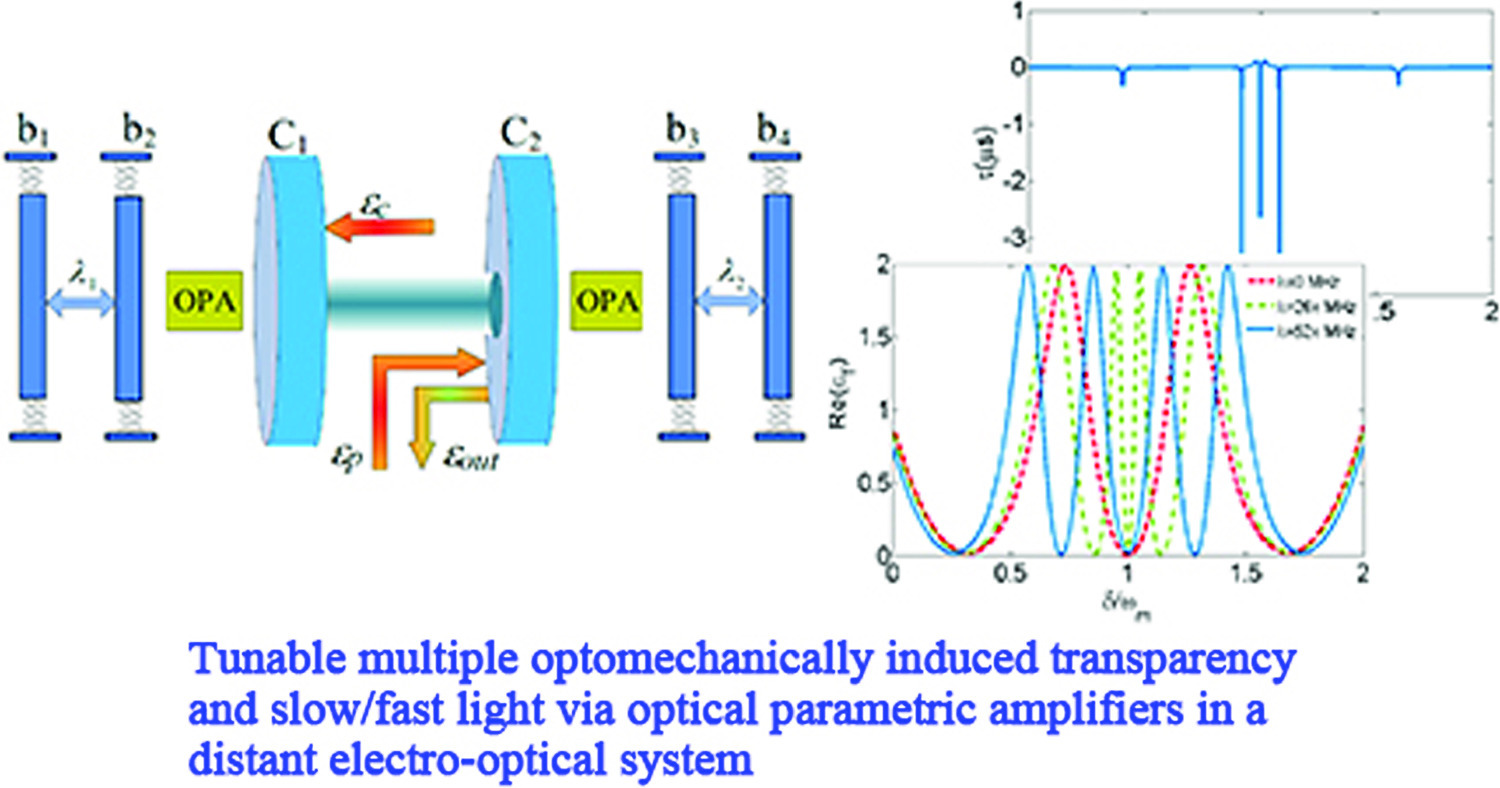https://doi.org/10.1140/epjd/s10053-024-00807-9
Regular Article - Quantum Optics
Tunable multiple optomechanically induced transparency and slow/fast light via optical parametric amplifiers in a distant electro-optical system
1
School of Mechanics and Optoelectronic Physics, Anhui University of Science and Technology, 232001, Huainan, China
2
School of Physics and Electronic Engineering, Jiaying University, 514015, Meizhou, China
Received:
26
July
2023
Accepted:
14
January
2024
Published online:
5
February
2024
We investigate the tunable multiple optomechanically induced transparency in a distant electro-optical system. It consists of two distant optomechanical cavities with two optical parametric amplifiers, which are coupled to charged mechanical oscillators by Coulomb interaction. The system displays the phenomena of tunable multiple optomechanically induced transparency. Specifically, the number and the width of the transparency windows can be manipulated by the coupling parameters. It is found that the larger the Coulomb coupling between the two mechanical resonators, and the coupling between the cavities, as well as the parametric gain of the optical parametric amplifier, the wider the transparency windows. Furthermore, we also study the slow/fast light effect associated with the rapid phase dispersion and group delay of the output probe field. Our approach is feasible for controlling multipartite induced transparency, which represents a valuable step toward quantum networks with photonic and phononic circuits.
Copyright comment Springer Nature or its licensor (e.g. a society or other partner) holds exclusive rights to this article under a publishing agreement with the author(s) or other rightsholder(s); author self-archiving of the accepted manuscript version of this article is solely governed by the terms of such publishing agreement and applicable law.
© The Author(s), under exclusive licence to EDP Sciences, SIF and Springer-Verlag GmbH Germany, part of Springer Nature 2024. Springer Nature or its licensor (e.g. a society or other partner) holds exclusive rights to this article under a publishing agreement with the author(s) or other rightsholder(s); author self-archiving of the accepted manuscript version of this article is solely governed by the terms of such publishing agreement and applicable law.





